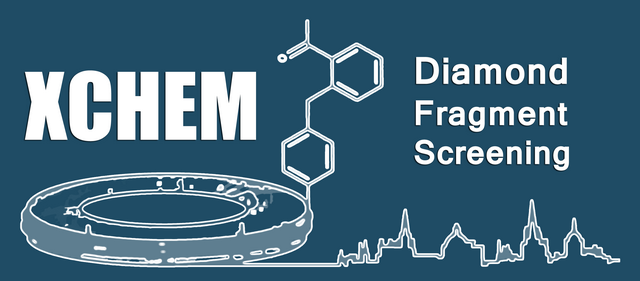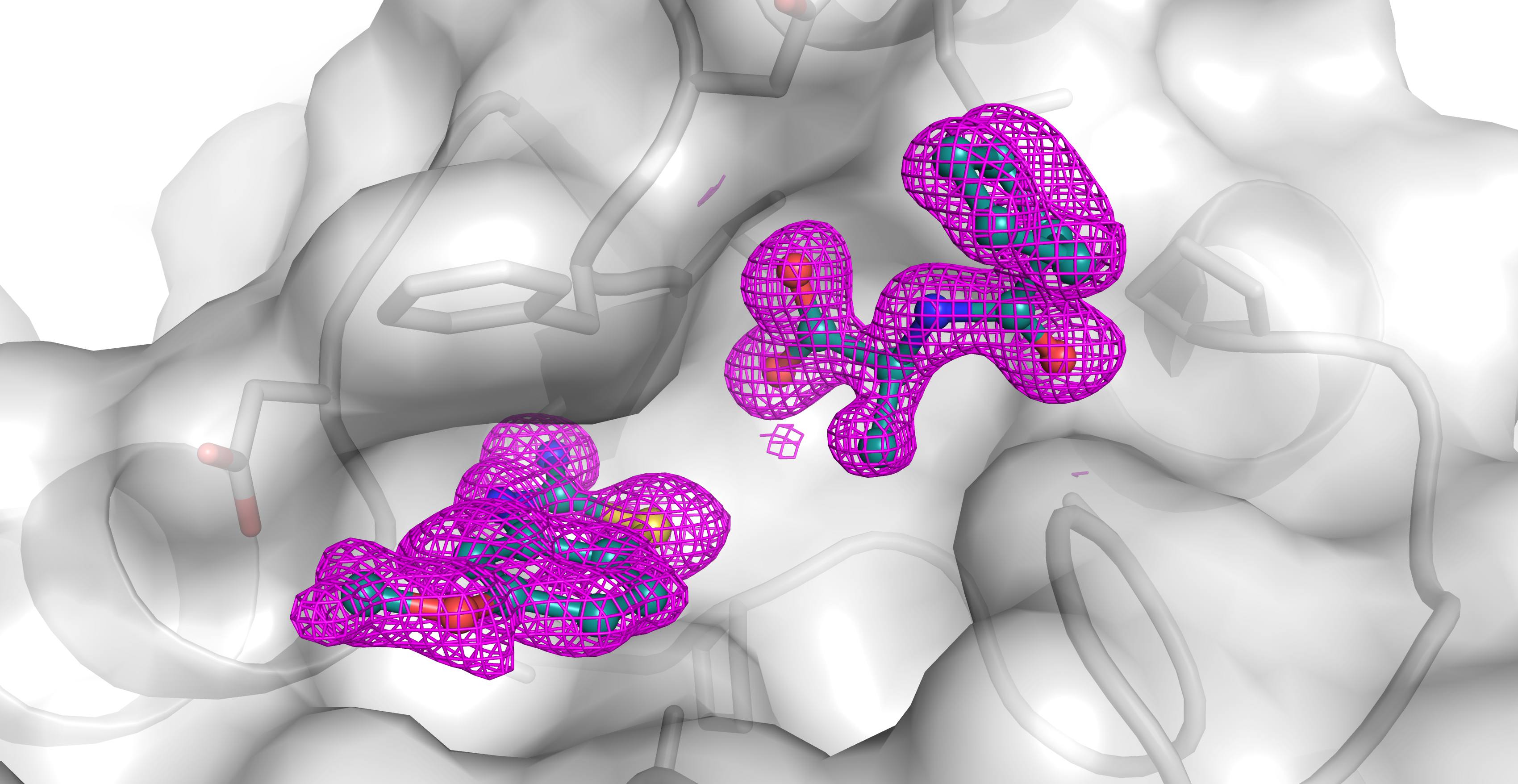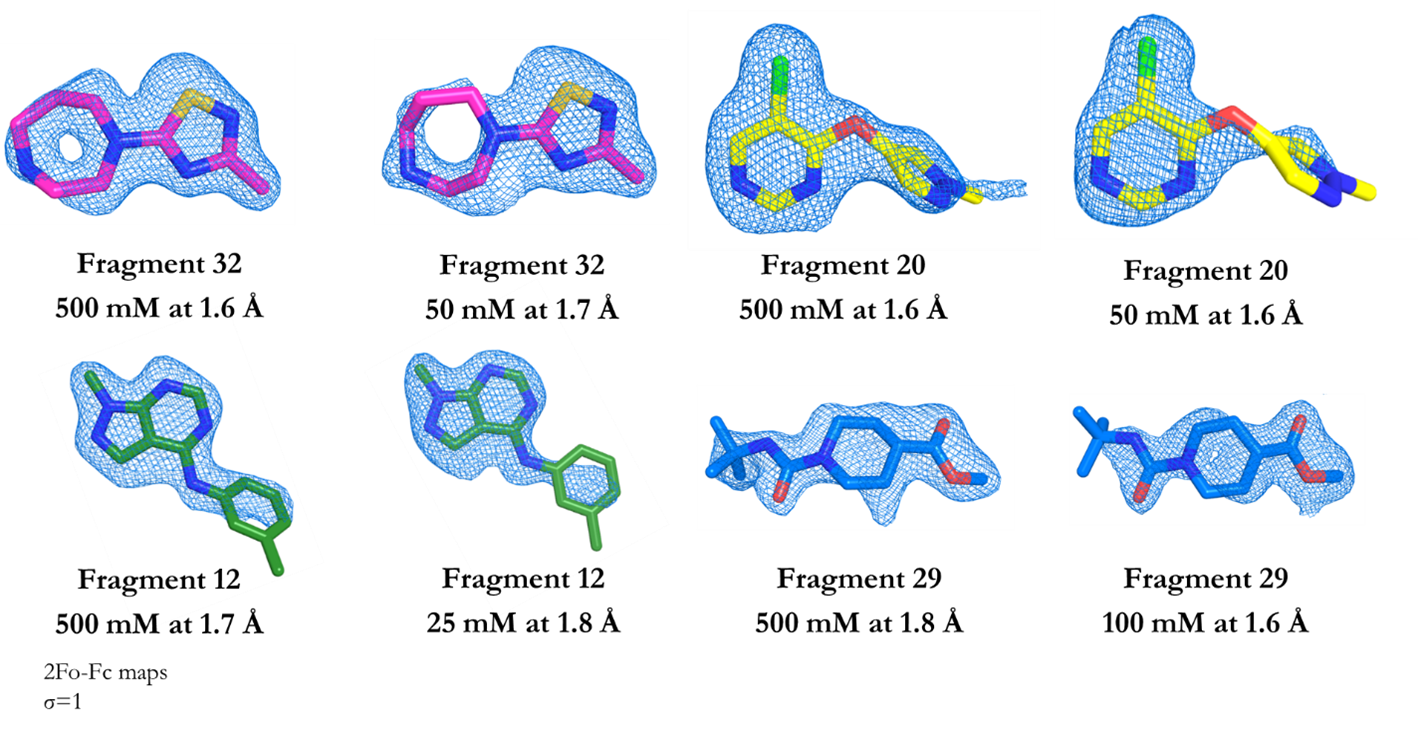
Fragment-based screening is now well-established as a powerful approach to early drug ("lead") discovery.
Email: [email protected]
Tel: +44 (0) 1235 778926

Combi soak experiments are designed to improve understanding of how two fragments that are known to bind individually may interact with one another, and their environment, and what affect this might have on compound development. Typical combi-soaks use the same format as a single soak experiment - but deposit two ligands, each at half the tolerated solvent volume, rather than one.
Designing compounds using combi-soaked structures increases the chance that any newly designed ligand will bind effectively to the protein, by allowing designers to account for movements affecting protein backbone, sidechains, and solvent that can occur when two locations are occupied simultaneously by soaked fragments.

Fragment soaking experiments can deliver large numbers of 'hit' molecules, often clustered closely in a small number of locations. Unlike primary biophysical techniques fir fragment screening, there is no quantitative information available from the results of an initial fragment screen.
Fragment titration experiments are designed to circumvent this challenge, allowing users to prioritise amongst weakly binding fragments for futher development towards lead compounds. The experiment takes the same form as a primary fragment screening, but soaks each previously fragment hit against crystals at a series of diminishing concentrations. The results, once processed without bias for the known binding site through XCE and PANDDA, highlight those fragments that are still meaningfully incorporated by protein at low micromolar concentrations.
Details of the theory and results of the first fragment titrations are available here - Too weak for biophysics: Prioritising and progressing fragment hits from X-ray crystallographic screening. Dubianok, Yuliya (2021)
Diamond Light Source is the UK's national synchrotron science facility, located at the Harwell Science and Innovation Campus in Oxfordshire.
Copyright © 2022 Diamond Light Source
Diamond Light Source Ltd
Diamond House
Harwell Science & Innovation Campus
Didcot
Oxfordshire
OX11 0DE
Diamond Light Source® and the Diamond logo are registered trademarks of Diamond Light Source Ltd
Registered in England and Wales at Diamond House, Harwell Science and Innovation Campus, Didcot, Oxfordshire, OX11 0DE, United Kingdom. Company number: 4375679. VAT number: 287 461 957. Economic Operators Registration and Identification (EORI) number: GB287461957003.